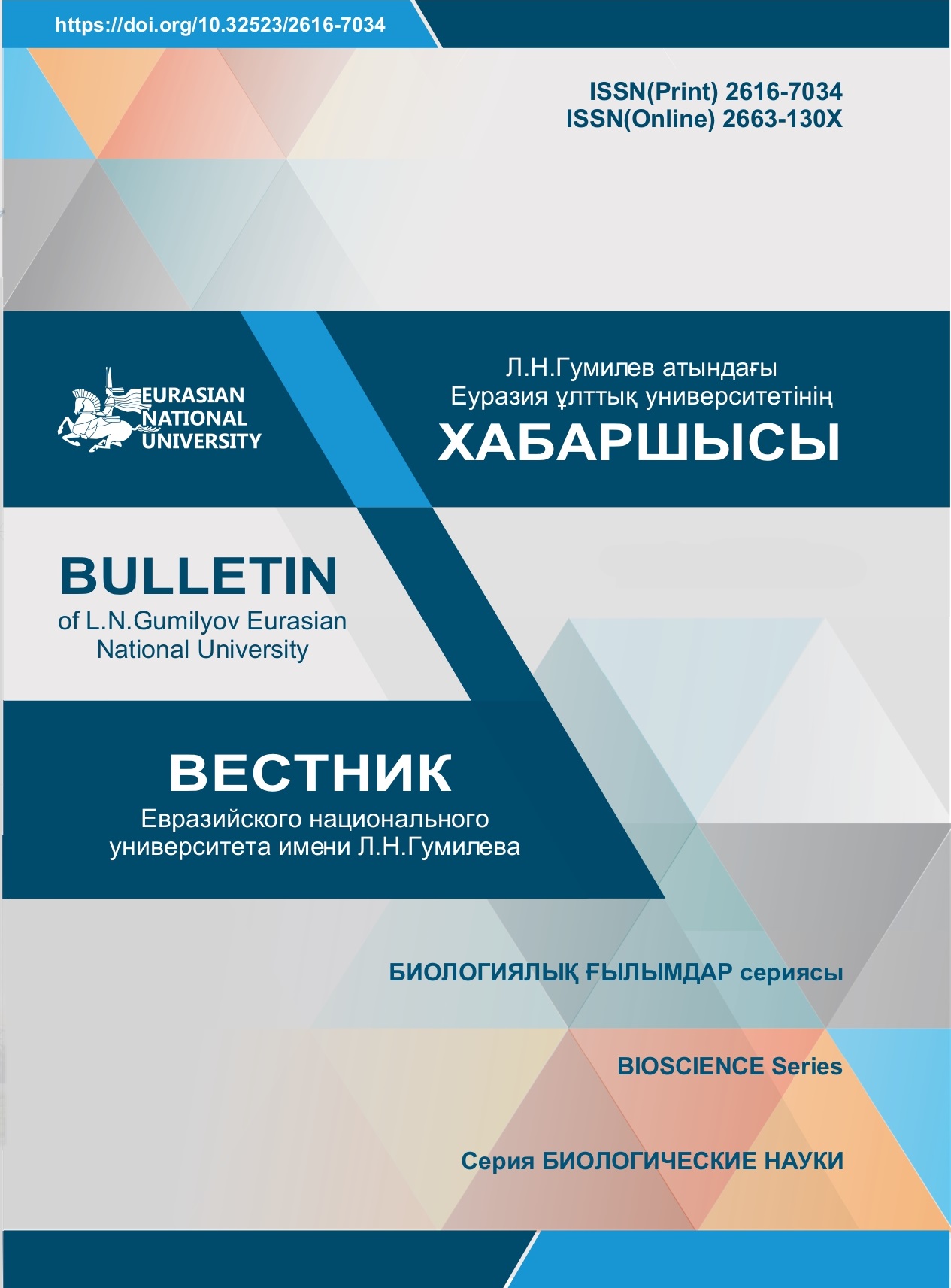The impact of industrial pollution on the structure of animal populations in Northern Kazakhstan
Views: 139 / PDF downloads: 215
Keywords:
small mammals, industrial emissions, species diversity, alignment, species richnessAbstract
The study was conducted in the spring-summer period of 2021 on the territory of the Pavlodar region. The authors studied the number of populations, sex, and age belonging of small mammals. Gero crushers and trap grooves with cones were used on the technogenic territory near the Pavlodar aluminum and Kazakhstan electrolysis plants. 173 animals were obtained: 104 in the background areas and 69 in technogenic territories. The animals belong to 15 species of two orders: Rodents and Insectivores. As a result of the research, a decrease in species richness (<0.695) and species diversity (<0.228) was noted, the dominance of Microtus gregalis (42) and Sicista subtilis (26.1) in areas subject to anthropogenic load was noted. The number of males participating in inbreeding in the territories near factories increases in the steppe mouse and narrow-crusted vole (67%), compared with the control (33%). At the control sites, there were fewer mature females (42%) than at the technogenic ones (58%). The fecundity of females (the number of embryos) is lower in the control area (±5.28) compared to the technogenic zone (±6.1).








